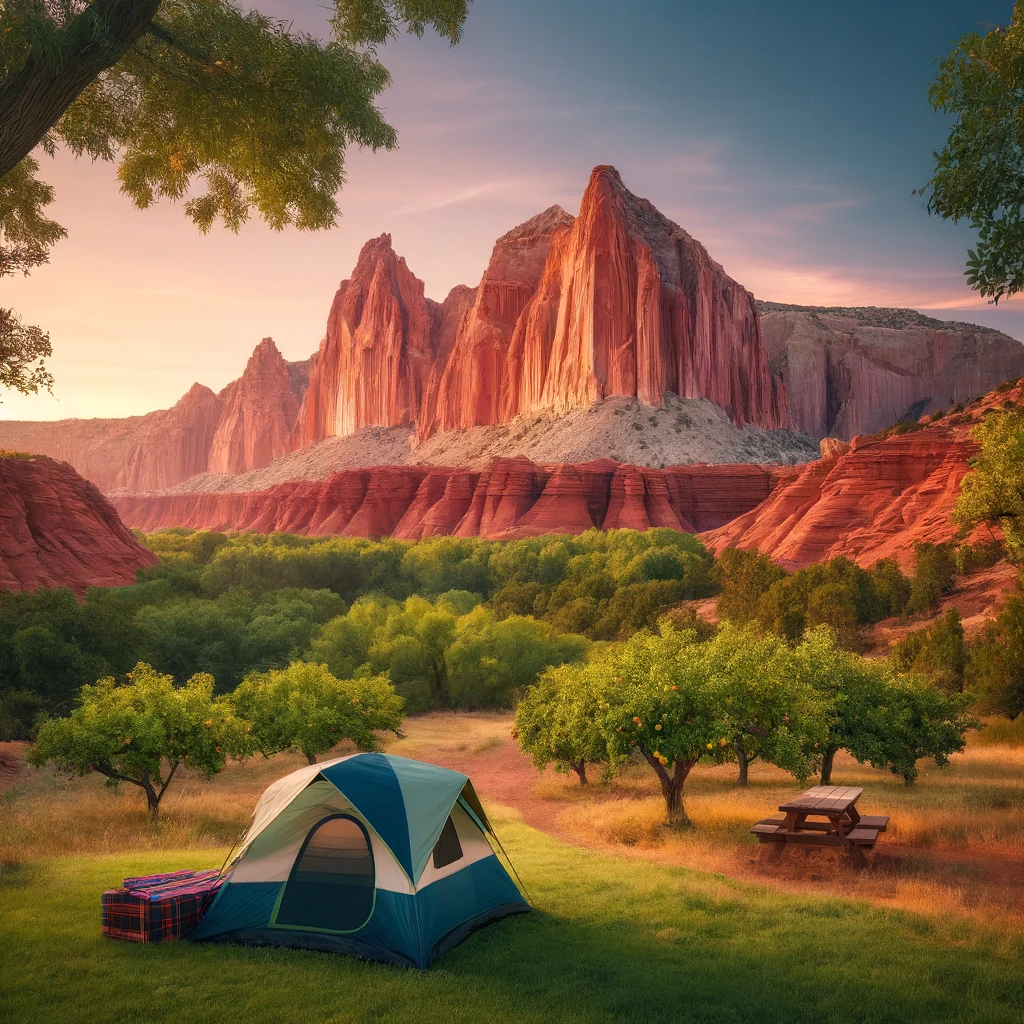Planning a summer camping trip can be an exciting yet daunting task. Whether you’re a seasoned camper or a first-timer, proper preparation ensures a memorable and enjoyable outdoor experience. This comprehensive guide will walk you through the essential steps to plan your perfect summer camping adventure.
Step 1: Define Your Camping Style and Destination
The first step in planning your summer camping trip is to determine your camping style and ideal destination. Are you interested in car camping, backpacking, or RV camping? Each style has its own unique requirements and considerations.
When choosing a destination, consider factors such as your experience level, desired scenery, and preferred activities. For example, if you’re new to camping, start with a well-established campground with amenities like restrooms and potable water. More experienced campers might opt for remote backcountry sites.
Research potential destinations that align with your preferences. National parks, state parks, and private campgrounds all offer different experiences. Consider the area’s climate, terrain, and available activities to ensure they match your expectations.
Step 2: Set Your Dates and Make Reservations
Once you’ve chosen your destination, it’s time to set your dates and make reservations. Summer is peak camping season, so popular campgrounds can fill up months in advance. Research the booking windows for your chosen campsite and mark your calendar to ensure you don’t miss out.
If your preferred dates or campsites are unavailable, consider alternative options. Look for nearby campgrounds or adjust your dates if possible. Some campgrounds offer first-come, first-served sites, which can be a good option if you’re flexible with your plans.
Step 3: Research Your Destination
Thorough research of your camping destination is crucial for a safe and enjoyable trip. Familiarize yourself with local regulations, including fire restrictions, pet policies, and any required permits. Understanding the area’s flora and fauna can enhance your experience and help you prepare for potential wildlife encounters.
Identify nearby attractions and activities that interest you. This could include hiking trails, fishing spots, or historical sites. Having a list of potential activities can help you make the most of your trip, especially if weather conditions change your initial plans.
Step 4: Plan Your Meals and Provisions
Meal planning is an essential part of camping preparation. Create a meal plan that includes easy-to-prepare foods suitable for outdoor cooking. Consider no-cook options for lunches and snacks to save time and fuel.
When packing food, opt for non-perishable items and those that don’t require refrigeration. If you’re bringing perishables, ensure you have a good-quality cooler and plenty of ice.
Remember to plan for proper food storage to avoid attracting wildlife to your campsite. Bear-resistant containers or food lockers may be required in some areas.
Step 5: Gear Up for Success
Having the right gear can make or break your camping experience. Create a comprehensive camping essentials checklist that includes items like a tent, sleeping bags, cooking equipment, and lighting. Consider the specific needs of summer camping, such as lightweight, breathable clothing and sun protection.
Before your trip, inspect and test all your gear to ensure it’s in good working condition. This is especially important for items like tents and stoves that you may not have used since last season.
Step 6: Prepare for Weather and Safety
Summer weather can be unpredictable, so it’s essential to be prepared for various conditions. Check long-range weather forecasts for your destination, but be prepared for sudden changes. Pack clothing that can be layered for warmth and protection from the elements.
Create a safety plan that includes emergency contact information, a first aid kit, and knowledge of the nearest medical facilities. Familiarize yourself with essential summer camping skills, such as basic first aid and navigation.
Step 7: Plan Your Transportation
If you’re driving to your campsite, ensure your vehicle is in good condition for the trip. Schedule any necessary maintenance before you leave. Plan your route, identifying potential rest stops and gas stations along the way.
When packing your vehicle, organize gear efficiently for easy access. Keep essential items like your first aid kit and snacks easily reachable.
Step 8: Organize Activities and Entertainment
While nature provides plenty of entertainment, planning some activities for your trip is a good idea. Research hiking trails suitable for your group’s fitness level and pack appropriate gear. Consider bringing games or books for downtime at the campsite.
If you’re camping with children, plan educational activities to help them learn about nature and outdoor skills.
Step 9: Practice Leave No Trace Principles
Responsible camping involves minimizing your impact on the environment. Familiarize yourself with Leave No Trace principles and plan how you’ll implement them during your trip. This includes packing out all trash, respecting wildlife, and leaving natural objects where you find them.
Choose eco-friendly camping supplies when possible, such as biodegradable soap and reusable water bottles.
Step 10: Final Preparations
As your trip approaches, create a detailed packing list to ensure you remember all essential items. Inform a trusted friend or family member of your trip plans, including your destination and expected return date.
Double-check all reservations and permits, and download any necessary maps or information for offline use in case you don’t have cell service at your campsite.
Conclusion
Planning a summer camping trip requires attention to detail and thoughtful preparation. By following these steps and considering factors like choosing the best campsite for summer weather conditions, you’ll be well-prepared for a fantastic outdoor adventure. Remember, while planning is essential, remember to leave room for spontaneity and the unexpected joys that nature can provide.

Leave a Reply